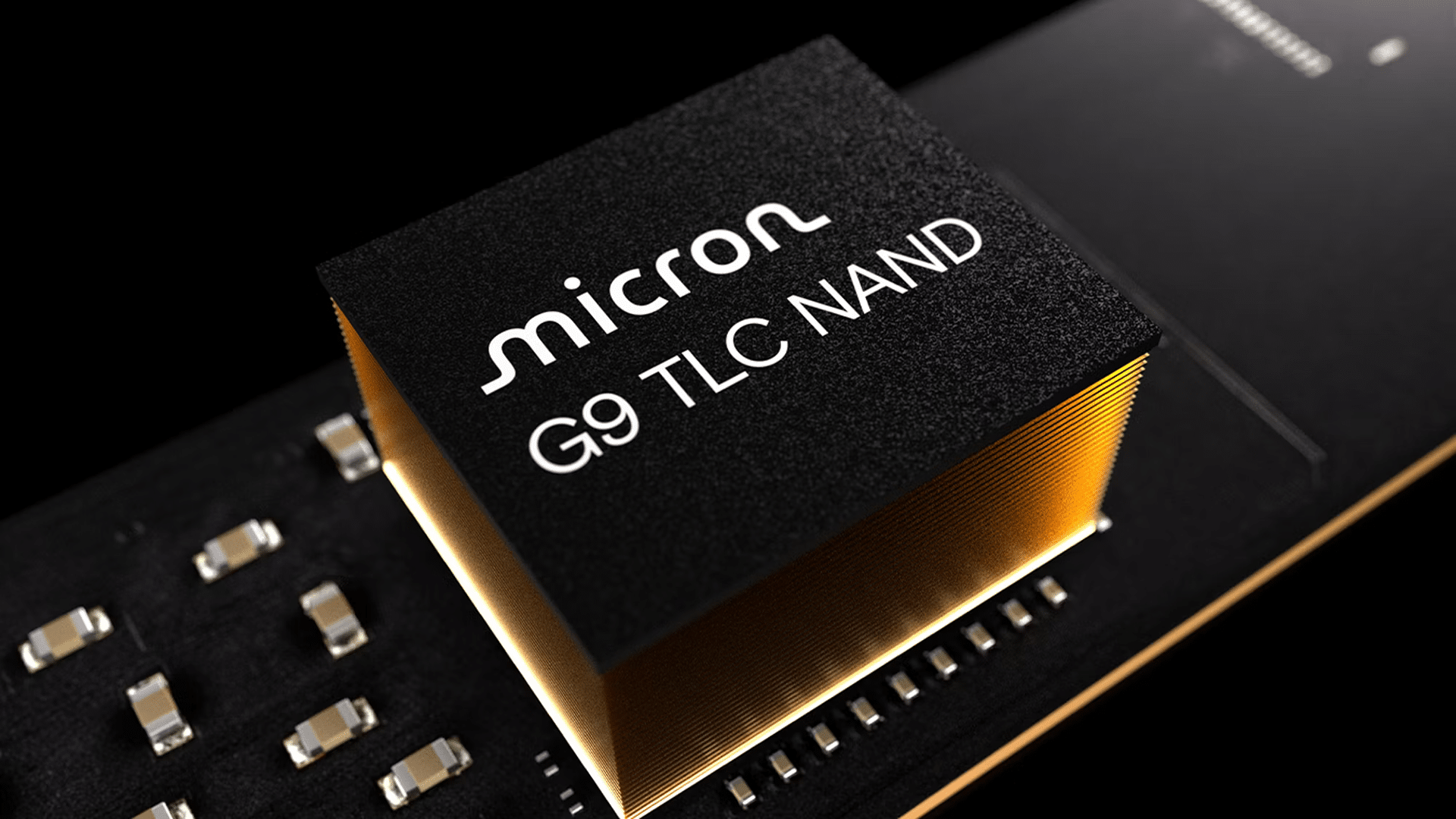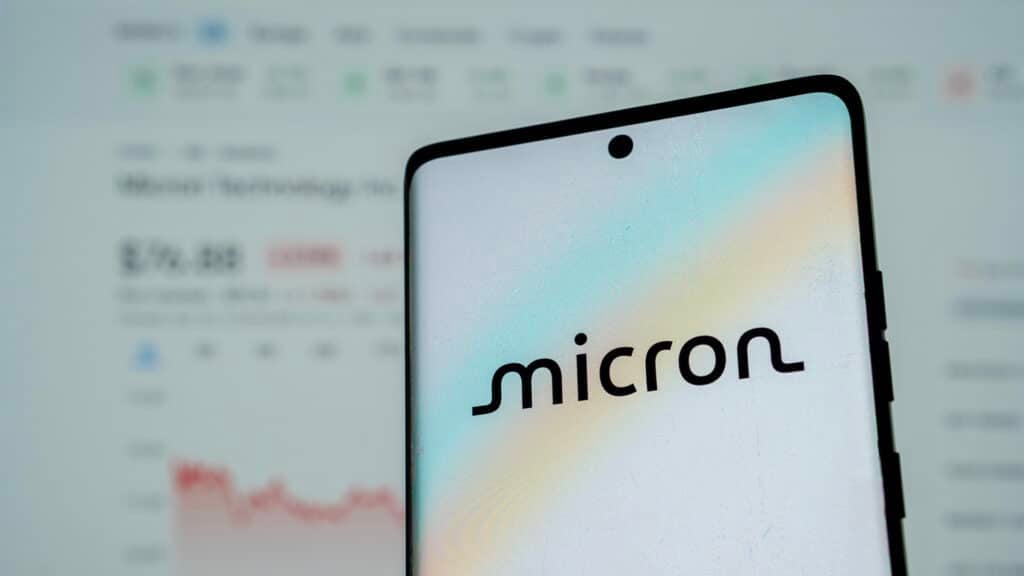Analyst(s): Ron Westfall
Publication Date: April 22, 2025
What is Covered in this Article:
- The G9 NAND and new firmware solution spotlight Micron’s commitment to advancing mobile technology.
- Micron’s mobile portfolio delivers the power efficiency, high performance, and massive capacity needed to propel the next wave of AI innovation in flagship smartphones, as evidenced by the Samsung Galaxy S25 series deal.
- Micron G9 NAND delivers a breakthrough I/O transfer rate of 3.6 GB/s and the highest density, accelerating AI, data centers, mobile devices, and automotive storage with advantageous performance and efficiency.
The News: At MWC25, Micron announced sampling the breakthrough G9 NAND for mobile with its UFS 4.1 and UFS 3.1 products. The latest innovation in NAND technology, the G9 node, is designed to bring peak performance and density dominance to all storage solutions.
Micron Introducing Breakthrough G9 NAND to Premium Smartphones
Analyst Take: Micron Technology is dedicated to providing advanced NAND flash solutions with tailored features for flagship smartphones, driving AI acceleration at the edge. Micron collaborates with customers and ecosystem partners and aligns its product and technology roadmaps with emerging AI and edge computing trends. This ensures future mobile devices can manage complex AI tasks and data-heavy applications. Innovations such as G9 NAND and new firmware features highlight Micron’s commitment to advancing mobile technology.
At MWC 25, Micron unveiled its low-power double data rate 5X (LPDDR5X) memory and universal flash storage (UFS) 4.0 as featured in select devices across the Samsung Galaxy S25 series, which introduces multimodal AI agents to pioneer intuitive and context-aware mobile AI experiences. Additionally, Micron unveiled the shipping of its most advanced LPDDR5X memory that offers users more than 10% power improvement. With its One UI 7 update, the Galaxy S25 series is built as an AI companion that provides personalized experiences tailored to users’ unique needs, powered by multimodal AI agents that interpret text, speech, images, and videos.
At MWC25, in conversations with Mark Montierth, Corporate VP and GM, Mobile and Client Business Unit and Chris Jacobs, Vice President & GM, Automotive & Embedded Market Segments demonstrated why Micron’s high-bandwidth LPDDR5X memory and cutting-edge UFS 4.0 storage as integrated into select Galaxy S25 Ultra, Galaxy S25+, and Galaxy S25 devices, enhances real-time AI processing for users. The high-capacity UFS 4.0 storage enables local data storage, improving personal data security by reducing reliance on the cloud. Additionally, Micron’s LPDDR5X, powered by advanced 1β process technology and optimized design, operates at lower-than-standard voltages, boosting power efficiency and extending battery life.
G9 NAND: Shaping the Future of Mobile AI Capabilities
Micron’s G9 NAND, a 9th-generation TLC NAND with 276 layers, delivers a multitude of advances in key areas such as power efficiency, read-write performance, packaging, and AI workload optimization. G9 NAND enhances power efficiency, using up to 70% less power during active use and 66% less in sleep mode than other Micron client SSDs. This significantly extends battery life, meeting consumer needs for power-hungry applications such as AI, 5G, and mobile gaming. Moreover, Micron G9 NAND delivers a breakthrough I/O transfer rate of 3.6 GB/s and the highest density, accelerating AI, data centers, mobile devices, and automotive storage with advantageous performance and efficiency.
G9 NAND-powered UFS 4.1 delivers exceptional read/write speeds (up to 4300 MB/s read and 4000 MB/s write for UFS 4.0, with UFS 4.1 anticipated to match or exceed these), doubling the performance of UFS 3.1. Though slightly less advanced, UFS 3.1 still offers notable improvements over earlier generations, enabling faster app launches, quicker downloads, and smooth multitasking. These speed boosts enhance camera responsiveness, reduce load times, and support seamless gaming and multitasking, which are essential for premium smartphones.
UFS 4.1 incorporates Zoned UFS, minimizing write amplification and boosting read-write efficiency, vital for on-device AI tasks like real-time data processing and personalized inference (e.g., route planning, smart home control). Features like Pinned WriteBooster (30% faster buffer access) and data defragmentation (60% improvement) enhance AI-driven apps and large data workloads. Both UFS 4.1 and 3.1 support 5G’s high data rates, enabling fast downloads (e.g., a 4K movie in ~9.3 seconds with UFS 3.1) and immersive user experiences.
G9 NAND enables compact UFS packages (e.g., UFS 4.0 reduced to 117 mm², a 20% area reduction), accommodating slimmer smartphone designs and larger batteries. Capacities up to 1TB (256GB, 512GB, 1TB options) support growing storage needs for HD photos, videos, games, and AI models, reducing storage constraints.
Features such as Data Stream Separation (DSS), Automatic Read Burst (ARB), and One-Button Refresh improve performance by minimizing garbage collection, enhancing read speeds, and maintaining “like-new” operation, directly benefiting user experience.
Micron G9 NAND Delivers Competitive Advantages
Micron G9 NAND offers competitive advantages in relation to offerings from key rivals such as SK hynix, Kioxia, Western Digital, and Solidigm. Micron can defend delivering the industry’s fastest NAND I/O speed, achieving up to 50% faster data transfer rates, 99% higher write bandwidth, and 88% better read bandwidth per die than NAND solutions currently shipping in SSDs.
The G9 NAND is also up to 73% denser, enabling more compact and efficient storage solutions, and fits in a 28% smaller package (11.5mm x 13.5mm) than rival products. These attributes translate to a performance edge in the Micron 2650 NVMe SSD, which outperforms competitors in PCMark 10 benchmarks by up to 38%, with sequential read speeds of 7,000 MB/s, 70% better sequential read, 103% better sequential write, 156% better random read, and 85% better random write compared to competing PCIe Gen4 SSDs.
In the non-volatile flash memory market segment, Samsung is a major rival. However, the selection of Micron’s UFS 4.0 and LPDDR5x solutions in its Galaxy S25 series provides testament to the competitive virtues of Micron’s portfolio. Micron’s advantage stems from the early deployment and shipment to market edge as well as optimized performance of its G9 NAND, though maintaining its lead will require ongoing innovation across an intensely competitive landscape.
Looking Ahead
Overall, I believe Micron’s G9 NAND with UFS 4.1 and UFS 3.1 drives the mobile ecosystem forward by delivering faster, more efficient, and AI-optimized storage solutions. This enhances smartphone performance, supports cutting-edge applications, and aligns with market demands for sleek, high-capacity, battery-efficient devices, solidifying Micron’s role in shaping the future of mobile technology.
Micron’s G9 NAND reinforces its memory innovation prowess in mobile storage, validated for platforms like Qualcomm’s Snapdragon 8 Elite, ensuring compatibility with top-tier smartphones (e.g., Galaxy S25 series). Backward compatibility of UFS 4.1 with UFS 3.1 allows broader adoption across flagship and mid-range devices, driving ecosystem-wide upgrades. These advancements enable manufacturers to deliver responsive, feature-rich devices, meeting customer expectations for instant-on experiences and supporting innovative form factors like foldable phones.
What to Watch:
- Micron is positioned to execute G9 NAND portfolio advancements in key areas such as higher storage densities, enabling more compact and efficient storage solutions for AI and data-intensive applications.
- Expect Micron to expand its NAND ecosystem influence by leveraging strategic partnerships, advancing 3D NAND and QLC technologies, and expanding the targeting of high-growth sectors such as AI, automotive, and data centers.
- Micron’s mobile solutions gain critical ecosystem momentum in providing the collaboration foundation integral to delivering transformative AI capabilities that shape mobile AI technology innovation.
You can read the full blog at Micron’s website.
Disclosure: The Futurum Group is a research and advisory firm that engages or has engaged in research, analysis, and advisory services with many technology companies, including those mentioned in this article. The author does not hold any equity positions with any company mentioned in this article.
Analysis and opinions expressed herein are specific to the analyst individually and data and other information that might have been provided for validation, not those of The Futurum Group as a whole.
Other insights from The Futurum Group:
Marvell HBM Compute Architecture Ready to Transform Cloud AI Acceleration
Exploring Micron G9 NAND – The World’s Fastest NAND
Image Credit: Micron
Author Information
Ron is an experienced, customer-focused research expert and analyst, with over 20 years of experience in the digital and IT transformation markets, working with businesses to drive consistent revenue and sales growth.
Ron holds a Master of Arts in Public Policy from University of Nevada — Las Vegas and a Bachelor of Arts in political science/government from William and Mary.







